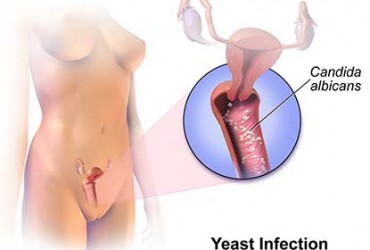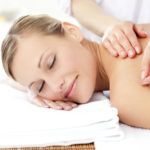
Easy Home Remedies For Vaginal Yeast Infections
A vaginal yeast infection, or vaginal candidiasis, is caused by a fungus, not bacteria. The infection occurs when there’s an overgrowth of Candida albicans fungus. This overgrowth triggers symptoms such as vaginal discharge, as well as irritation, inflammation, and intense itching in the vagina, especially the vulvar area. Long before there were drugstores, women turned to natural remedies to treat vaginal yeast infections. You can now choose between over-the-counter antifungal creams and natural remedies, such as yogurt and tea tree oil.
No well-controlled studies have proven the effectiveness of folk remedies for treating yeast infections, although there’s plenty of anecdotal evidence that suggests they work. Keep reading to learn about six popular home remedies for yeast infections.
Different Way To Home Remedies for Vaginal Yeast Infections
Over-the-counter antifungal creams
The most common home remedy for vaginal yeast infections is antifungal cream or suppositories. You can buy these items without a prescription at pharmacies and most grocery stores. One-day, three-day, and seven-day options are available. The treatments include antifungal cream or suppositories, an applicator, and instructions. External anti-itch medicine may also be included.
To use these treatments, place the cream or suppository in the applicator. Then insert it into your vagina according to the package instructions.
Yogurt
Yogurt is considered a probiotic food. It contains live bacteria, such as Lactobacillus acidophilus. Probiotics are thought to help restore the bacteria-yeast balance throughout your body.
A review of research published in the Journal of Antimicrobial Chemotherapy found that some probiotics may be effective against C. albicans. However, most of the studies reviewed had flawed methods, such as a small sample size or no control group. This makes the results unreliable. Still, many women eat yogurt or apply plain yogurt vaginally to relieve vaginal yeast infection symptoms.
Boric acid
Boric acid is an antiseptic. It’s useful for treating chronic vaginal yeast infections or yeast infections that are resistant to other remedies.
According to a 2009 study, topical boric acid showed encouraging results as a treatment for vaginal infections. Some health websites claim boric acid vaginal suppositories may also be effective in treating vaginal yeast infections. However, more research is needed to confirm boric acid as an effective treatment. It’s available by prescription, but is also a popular home remedy.
Note:
Boric acid is toxic and can lead to acute failure of the circulatory system, kidney damage, or death if sufficient amounts are absorbed. Don’t use it on broken skin or take it orally. Never use boric acid if you’re pregnant.
Oil of oregano
The oil of oregano that’s used to treat yeast infections isn’t the same type that you’ll find in a grocery store’s spice section. Look for oil of oregano made from wild oregano, or Origanum vulgare. It contains thymol and carvacrol, which are powerful antifungals. In contrast, common oregano, or Origanum marjoram, is what you usually find in your grocery store’s spice section.
A study published in the journal Molecular and Cellular Biochemistry found that wild oregano oil either stopped or slowed the growth of C. albicans, depending on the dosage used.
Note:
Oil of oregano is a natural blood thinner. Don’t use it if you take blood thinners or have blood-clotting issues.
Coconut oil
Coconut oil is a fatty oil derived from the flesh of the coconut. The oil is said to have many health benefits, and has been proven to have antifungal properties. Studies have shown that coconut oil is effective against C. albicans.
To treat a vaginal yeast infection using coconut oil, be sure to buy a pure, organic coconut oil. You can apply the oil directly to the affected area. For more detailed instructions, see here.
Tea tree oil
Tea tree oil is an essential oil that’s used to kill fungi, bacteria, and viruses. Research shows that a vaginal suppository containing tea tree oil may help treat vaginal infections. Tea tree oil is also believed to help maintain a healthy balance of flora in the vagina.
What to expect
Most home remedies bring relief within a few days. Some may take up to a week. Call your doctor if your symptoms worsen or new symptoms appear at any time during treatment. Also call your doctor if you have persistent irritation that’s separate from your yeast infection symptoms.
If your infection goes away with treatment but then returns, contact your doctor for advice. You may need a stronger, prescription-strength treatment.
Preventing vaginal yeast infections
Vaginal yeast infections are often painful. The best strategy is to avoid getting an infection in the first place. Follow these tips to help prevent yeast infections:
- Limit the amount of sugar and processed foods you consume. Yeast thrives on sugar.
- Wear loose-fitting cotton underwear. Yeast grows in warm, moist environments.
- Don’t spend extended periods of time in wet clothes or bathing suits.
- Avoid soaking in hot tubs or hot baths.
- Only use antibiotics when necessary.
- Don’t use douches, unless advised by your doctor, and avoid vaginal deodorant sprays and scented vaginal lotions. They may alter the balance of good bacteria and yeast in your vagina.
In some cases, you shouldn’t self-treat a vaginal yeast infection. Call your doctor before trying home remedies if:
When to call your doctor
-
You’ve never had a vaginal yeast infection before.
You should see your doctor to make sure that you actually have a yeast infection.
-
You’re not sure if you currently have one.
You may have another type of infection. Yeast infection symptoms can mimic other infections such as bacterial vaginosis and urinary tract infections. Treating any infection incorrectly may cause it to worsen or spread.
-
You think you may have a complicated yeast infection.
This is a more severe infection. You might have a complicated yeast infection if you have symptoms of a yeast infection and:
-
- you’re pregnant
- you have diabetes
- you have a compromised immune system
- your symptoms are severe, such as vaginal fissures, tears, or sores
- you’ve had four or more yeast infections in a year
- you’ve attempted self-treatment and symptoms haven’t improved
The takeaway
Home remedies may or may not work to treat your yeast infection. Their effectiveness varies depending on the person, the severity of the infection, and the quality of the treatment used.
If you’ve had vaginal yeast infections before and you’ve successfully treated them with home remedies, you can give them a try again. Be sure to keep in mind, however, that any product, natural or otherwise, may irritate sensitive vaginal skin. You should stop using the remedy and call your doctor if you experience any irritation or discomfort.
For more information visit us our website: https://healthcaretipshub.com






